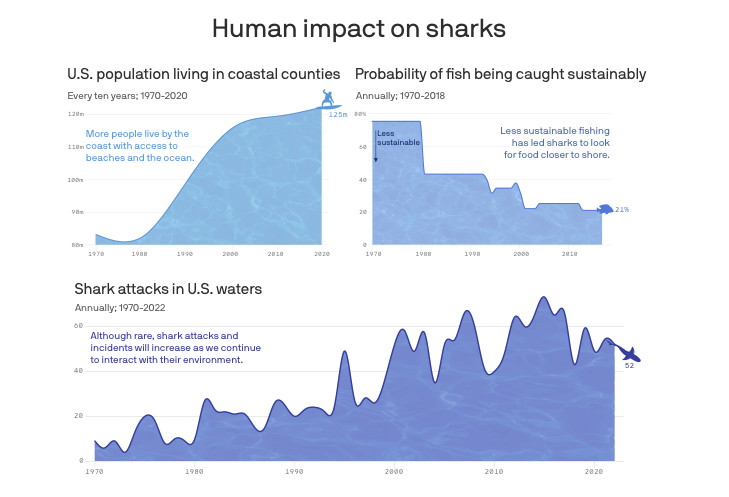Contacts:
Peter James MacCracken, APR | pjm@strategic-communications.com | (619) 275-4110
Celina Maggi | cmaggi@hswri.org | (619) 909-3449
Charted: Humans vs. sharks
By: Tory Lysik, Maura Losch
Shark attacks appear to be on a steady rise in recent years, according to data from the International Shark Attack File.
What’s happening: People are interacting with sharks more frequently than ever before. More people are living near oceans, and improvements to transportation systems have made it easier to access coastlines, according to Danielle Haulsee, the Chief Science Officer at Hubbs SeaWorld Research Institute.
- Alert systems have become more accessible too. Drones are being used to alert beachgoers when a shark is close to shore.
Why it matters: Although human and shark interactions are on the rise, shark populations are still very much suppressed.
- “Many shark species have been overfished, in fact on average we are killing 11,000 sharks per hour,” Haulsee said. And that’s a bad thing—”Healthy ocean ecosystems depend on healthy shark populations.”
The bottom line: Humans will always share the ocean with sharks. “We should respect them for the role they play in maintaining ecosystem balance and for their incredible adaptations to live in all oceans and many different environmental conditions! They were here first after all.”
Link to Publication
https://www.newsweek.com/sperm-whale-calf-stranded-florida-beach-euthanized-1830630
###

